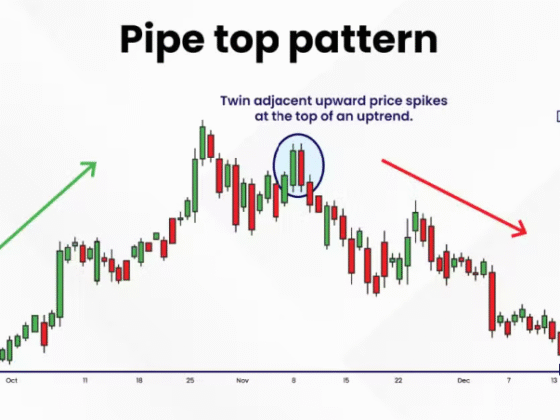The finance community has invested much effort to identify new factors that may indicate a security’s forward-looking performance or a portfolio’s risk attributes.
While this research can help us better understand asset pricing and offer the possibility of better performance, too often it presumes continuous markets, free trading, and boundless liquidity.
Far less research has focused on the practitioner’s dilemma: implementation shortfalls caused by frictions like trading costs and discontinuous trading. These real-life frictions can erode the performance of smart beta and factor strategies. Along with asset management fees, they are the main sources of the sometimes-vast gap between live results and paper portfolio performance.
Smart rebalancing methods can capture most of the factor premia while cutting turnover and trading costs relative to a fully rebalanced portfolio by prioritizing trades to the stocks with the most attractive signals and focusing portfolio turnover on trades that offer the highest potential performance impact.
In our study of long-only value, profitability, investment, and momentum factor portfolios created between 1963 and 2020, we examine performance and related turnover. We present results for the same strategies after applying three different turnover reduction methods to periodic portfolio rebalancing. We measure the efficacy of these different rebalancing rules in preserving as much of the factor premiums as possible. We also construct a monthly composite factor based on monthly value and momentum signals to guide rebalancing of multi-factor strategies.
The first rebalancing method, which we call proportional rebalancing, trades all stocks proportionally to meet the turnover target. For example, if the strategy indicates trades that are twice as large as the turnover target, this method trades 50% of the indicated trade for each stock.
The second rebalancing method, priority best, buys the stocks with the most attractive signals and sells the stocks with the most unattractive signals, until the turnover target is reached.[1]
The third method, priority worst, deliberately sorts the queues in the “wrong” order, buying the stocks that seem the most marginal in terms of their signals, saving the strongest buy or sell signals to trade last. In these comparisons, we find that the priority best method typically outperforms the other two methods.

Calendar-Driven Rebalancing Not Always the Best Option
Instead of forcing portfolios to rebalance on a fixed schedule, we also consider a rule in which we rebalance when the distance between the current and target portfolios exceeds a preset threshold.
Conditional on meeting this threshold, we then rebalance a prespecified proportion of the deviations using one of the three rules mentioned above. Again, we find that the priority-best rule generally outperforms the other two rules in the context of non-calendar-based rebalancing.
We seek to construct a turnover-constrained factor that retains as much of the reference factor’s premium as possible. An intuitive rule for prioritizing trades is based on stocks’ signal values. For example, if two new stocks enter the top quartile and we have enough turnover budget to trade into just one of them, it might make sense to trade the one with the more attractive signal. This rule implicitly assumes that future average returns are monotonic in the signal. That is, if we have stocks A, B, and C with signals 1.0, 1.5, and 2.0, we would expect a trading rule that prioritizes trades based on signal values to outperform other trading rules.

In the first part of our analysis in the Financial Analysts Journal, we report a number of performance metrics for the long-only factors we study. These factors, which hold various segments of the market, earn Sharpe ratios ranging from 0.60 for the monthly-rebalanced composite factor to 0.47 for the monthly-rebalanced value factor.
All factors, except for the monthly value factor, earn CAPM alphas that are statistically significant at the 5% level.[2] These Sharpe ratios and alphas, however, are based on the portfolios’ gross returns. The extent to which an investor could have come close to attaining this performance depends on the turnover the factor strategies incur and how much the underlying stocks cost to trade.
We then report CAPM alphas and t-values associated with these CAPM alphas for six sets of decile portfolios to assess how monotonic returns are in the signals. Our estimates indicate that expected returns are not entirely monotonic for most of the factors’ signals, meaning a trading rule that prioritizes trades based on signal values may not always add value.
Only trades with sufficient conviction can generate a post-trading-cost benefit to investors. If the signals were to convey perfect information about the stocks’ future performance, a fully rebalanced portfolio would deliver the best outcome, though not necessarily net of trading costs. When the signals are noisy and imperfect predictors of expected returns, as in the real world, a full-fledged rebalance is not likely to be the best solution when trades are costly.
Priority-Best Rule Optimizes Rebalancing Benefits
The priority-best rule, by design, significantly reduces turnover relative to an unconstrained version, while capturing most of the return benefit associated with factor investing. The efficacy of this rule, however, depends, as hypothesized, on the monotonicity of the relationship between a factor’s signal values and its average returns.
The main takeaway from our application of the priority-worst rule is that any investor who wants to run a momentum strategy, and accepts that this strategy will trade frequently, would do well to prioritize trades with the most attractive signal values.
We also report the results from a simple rebalancing method, using the proportional rebalancing rule, which does not prioritize any trade over another but instead partially executes a fixed fraction of trades to satisfy the turnover constraint. The estimates show that this rule typically falls between the two extremes represented by the priority-best and priority-worst rules. The benefit of this rule may be diversification: by spreading the trades across a larger number of stocks, the resulting portfolios occasionally take less risk.
Our estimates suggest the priority-best rule is even better for controlling turnover in a non-calendar-based setting than in a calendar-based setting. Its efficacy in controlling turnover relative to the two alternatives comes as no surprise when we recognize that the priority-best rule, by virtue of prioritizing trades in stocks that are the farthest removed from the portfolio selection threshold, is likely to minimize the expected need for additional trading.
In investment management, trading incurs a very real cost, which is associated with turnover. The more we trade, the more our portfolio pays in transaction costs. To overcome this trading cost erosion, most practitioners impose turnover constraints. We present a few different ways to rebalance a portfolio with a turnover rate constraint in which the trades are “rationed” toward the most attractive positions and demonstrate how effective prioritization of trades can benefit portfolio performance.

[1] The signals are, of course, the indication as to which stocks are most or least favored within the context of the particular factor strategy. We place every stock the investor would like to trade in two queues, then sort the queues by the signal values. The buy queue is sorted in descending order and the sell queue in ascending order. The investor then begins to process the trades in the order of the respective queues. She matches a trade from the buy queue with a trade from the sell queue and continues processing the queues until meeting the turnover constraint. If expected returns increase in signals, at least near-monotonically, the investor should prefer buying the stocks with the most attractive signals and removing from the portfolio the least attractive stocks.
[2] This result is consistent with the findings of Asness and Frazzini (2013). They note that, by using the most recent market value of equity, the denominator picks up part of the momentum effect: a stock is more likely a value stock if its recent return has been low, but this also implies, as Jegadeesh and Titman (1993) state, that its average return going forward is low. Asness and Frazzini find that the monthly value factor significantly outperforms the standard annual value factor when controlling for the momentum factor.
If you liked this post, don’t forget to subscribe to Enterprising Investor.
All posts are the opinion of the author. As such, they should not be construed as investment advice, nor do the opinions expressed necessarily reflect the views of CFA Institute or the author’s employer.
Image courtesy of Nick Webb. This file is licensed under the Creative Commons Attribution 2.0 Generic license. Cropped.
Professional Learning for CFA Institute Members
CFA Institute members are empowered to self-determine and self-report professional learning (PL) credits earned, including content on Enterprising Investor. Members can record credits easily using their online PL tracker.













